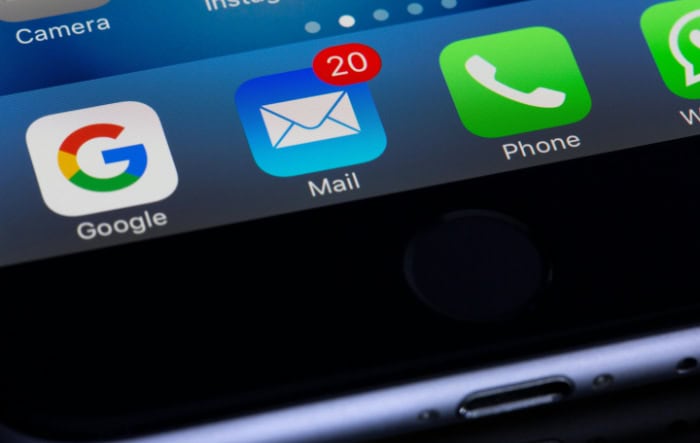Spam vs. Phishing: Spotting the Difference

Your email inbox acts as a daily battleground where legitimate messages fight for attention against clutter and dangerous traps. You likely delete dozens of emails every morning without a second thought.
Most users mistakenly group all this junk together, but there is a critical distinction between an annoying advertisement and a criminal attempt to steal your identity. Spam serves as a frustrating nuisance that fills up storage.
Phishing represents a calculated attack aimed at your sensitive data. Failing to separate a harmless marketing blast from a malicious lure can lead to serious financial loss.
Defining the Concepts: What Are They?
To secure your inbox, you must first define the threats accurately. Many people use the terms “spam” and “phishing” interchangeably, assuming every unwanted email falls into the same category.
However, the technical definitions reveal vast differences in execution and risk.
What Is Spam?
Spam essentially functions as the digital equivalent of junk mail stuffing your physical mailbox. Technically referred to as Unsolicited Bulk Email (UBE), it consists of messages sent to massive lists of recipients who never requested them.
The primary content is almost always commercial or promotional in nature. Spammers utilize a “shotgun” approach to advertising. They blast millions of messages hoping for a statistically insignificant return.
Their goal is simple marketing. They want to sell products, promote questionable services, or drive traffic to specific websites to generate ad revenue.
While frustrating, the mechanism here is aggressive advertising rather than direct theft.
What Is Phishing?
Phishing represents a much darker side of email communication. It is a form of malicious social engineering designed to deceive you into voluntarily revealing sensitive information.
Unlike spam, which shouts at you to buy something, phishing whispers a lie to trick you. The attacker impersonates a trusted entity, such as a bank, a colleague, or a service provider.
Their primary objective is the theft of valuable data. They seek your login credentials, credit card numbers, or personal identification details to commit identity fraud.
The danger lies not in the volume of emails sent, but in the cleverness of the deception used to manipulate your trust.
The Primary Distinction
The most important separation between these two concepts lies in the level of danger they present. Both categories arrive uninvited and clog up your inbox, which leads to the common confusion.
However, spam serves primarily as a nuisance. It wastes your time and resources but rarely aims to directly dismantle your life.
Phishing constitutes an active security threat. It carries a malicious payload intended to cause financial or reputational harm.
Confusing a nuisance with a threat can lead to complacency, which is exactly what cybercriminals hope will happen.
Intent and Psychology: The Motivation Behind the Messages

To effectively combat unwanted emails, you must recognize the motivation driving the sender. While the result of a cluttered inbox looks similar, the goals driving a spammer differ vastly from those of a cybercriminal.
Spam operates on the principles of aggressive marketing and sheer volume. Phishing relies on deception, manipulation, and theft.
Spam Intent: The Commercial Volume Game
Spammers function much like aggressive street hawkers. Their primary objective is commercial gain.
They want to sell you something. This might be a legitimate product, a gray market pharmaceutical, or a dubious service.
In many cases, the sender simply wants to drive traffic to a specific website to generate ad revenue. The content is often annoying but usually lacks the direct intent to compromise your security credentials.
Because sending email costs almost nothing, spammers play a numbers game. They operate under the assumption that the vast majority of recipients will ignore or delete the message immediately.
However, if they send ten million emails and only a tiny fraction of people make a purchase, the campaign remains profitable. The intent is rarely to steal your identity directly but rather to separate you from your cash through a purchase you might later regret.
Phishing Intent: Criminal Theft and Access
Phishing moves beyond simple annoyance into criminal territory. The sender does not want to sell you a product.
They want to steal from you. The goal is almost always the acquisition of valuable assets.
This includes bank account access, corporate login credentials, or sensitive personal data used for identity fraud. The attacker views your data as currency they can use or sell on the black market.
To achieve this, attackers weaponize psychology. They craft messages designed to bypass your logical reasoning and trigger an emotional response.
You might receive a panicked notification about a locked account, a fake invoice for a purchase you never made, or a threat of legal action. These tactics utilize fear, urgency, or curiosity to trick you into acting against your own best interest.
The attacker wins when you panic and hand over the keys to your digital life.
Targeting Differences: Generic Versus Personalized
The precision of the attack offers another major clue regarding its intent. Spam is inherently untargeted.
The sender blasts the same generic message to a massive list of addresses without knowing or caring who owns them. You receive the same offer for cheap sunglasses as a CEO, a retiree, or a student.
The content is broad because it must appeal to the widest possible audience to get that single click.
Phishing attacks often employ a much sharper focus. While some phishing campaigns are broad, dangerous variants like spear phishing rely on personalized research.
The attacker might use your actual name, reference your specific job title, or mimic a vendor your company actually uses to pay bills. This customization builds a false sense of trust that lowers your defenses.
A spammer throws a wide net hoping to catch anything. A phisher aims a harpoon directly at a specific victim.
Identifying Red Flags: How to Spot the Differences
Distinguishing between a harmless marketing blast and a malicious trap requires a sharp eye for detail. While spammers and phishers both want your attention, they leave behind different fingerprints based on their distinct objectives.
Recognizing these visual cues prevents you from falling victim to a scam or wasting time on junk. You must look beyond the subject line and analyze the structure, sender details, and content of the message to determine its true nature.
Analyzing the Marks of Common Spam
Spam messages usually betray their nature through a lack of personalization. Since the sender operates on bulk distribution, they rarely possess specific details about you.
You will often encounter generic salutations such as “Dear Customer,” “Valued Member,” or simply “Hello.” The content follows this trend by promoting broad, non-specific offers intended to appeal to a mass audience, such as weight loss pills, gambling sites, or heavily discounted luxury goods.
The sender hopes that out of thousands of recipients, one person might actually be interested.
Another consistent indicator involves the inclusion of commercial disclaimers and opt-out mechanisms. Spammers often include an “Unsubscribe” link at the bottom of the email to feign compliance with anti-spam regulations.
While you should be cautious about clicking these links in unknown emails, their presence alongside a generic sales pitch typically points to nuisance spam rather than a targeted attack. The overall presentation often feels sloppy, with mismatched fonts or formatting errors that legitimate companies would likely catch before sending a newsletter.
Detecting the Warning Signs of Phishing
Phishing emails rely on a different set of indicators designed to provoke an immediate response. The most prominent red flag is manufactured urgency. Attackers craft messages claiming that your account will be locked, a payment has failed, or legal action is imminent.
They want to induce panic so you act quickly without verifying the claim. If an email demands “immediate action required” or sets a tight deadline for a response, treat it with extreme suspicion.
Legitimate organizations rarely handle account issues with aggressive threats in an email.
You must also scrutinize the sender's address for signs of spoofing. Attackers often use addresses that look similar to, but are not identical to, the official domain of the company they are impersonating.
For example, a legitimate email from PayPal will come from paypal.com, whereas a phishing attempt might arrive from [email protected] or a domain with a slight misspelling. Hovering your mouse over the sender name often reveals the true, often nonsensical, email address hidden behind the display name.
The final major warning sign lies in the payload of the message. Phishing emails frequently direct you to click a link that leads to a fake login page designed to harvest your credentials.
Alternatively, they may urge you to download an attachment, such as a PDF invoice or a ZIP file containing a receipt for a purchase you never made. These attachments often contain malware that infects your device immediately upon opening.
If an email you were not expecting asks you to download a file or click a link to “verify” your identity, it is almost certainly a trap.
The Risk Factor: Nuisance Versus Danger

While spam and phishing both arrive uninvited, the potential damage they inflict varies wildly. One threatens your schedule and your patience, while the other threatens your financial stability and personal security.
The Impact of Spam on Productivity
Spam primarily attacks your productivity. The sheer volume of unsolicited messages forces you to waste valuable time sifting through clutter to find legitimate correspondence.
An inbox filled with promotional garbage creates a chaotic environment where you might miss important emails from work or family. Beyond the loss of time, spam exposes you to inappropriate content or low-level scams designed to trick you out of small sums of money.
While spam is generally less dangerous than a targeted attack, it still poses a risk. Some junk mail carries malware or links to compromised sites, meaning even a seemingly harmless advertisement requires careful handling.
The Impact of Phishing on Security
Phishing attacks carry high-stakes consequences that can alter your life in an instant. The objective is often direct financial theft or the acquisition of sensitive personal data for identity fraud.
A successful attack can drain your bank account, run up credit card debt in your name, or lock you out of essential digital services. For organizations, the impact is often catastrophic.
One employee clicking a single malicious link can allow ransomware to infect an entire network, holding corporate data hostage for millions of dollars. Data breaches resulting from these attacks compromise client trust and often lead to significant legal penalties.
The danger here is immediate and severe, as a single mistake can bypass even robust security systems.
Actionable Defense: How to Respond Effectively
Knowing the difference between a nuisance and a threat is only useful if you know how to react when an unwanted email lands in your inbox. Your response strategy must differ based on the intent of the message.
Treating a phishing attempt with the casual dismissal reserved for spam can lead to a security breach, while panicking over a harmless advertisement wastes valuable energy.
Handling Spam: Filter and Forget
Your primary goal with spam is to minimize its visibility and prevent it from cluttering your digital life. Simply deleting these messages often proves ineffective because it fails to address the root of the problem.
You should utilize the “Mark as Spam” or “Report Junk” features built into your email client. This action does more than remove the message from your view.
It trains the filtering algorithms to recognize similar patterns in the future, which helps block subsequent emails from that sender before they ever reach you.
You must exercise caution when attempting to stop these messages at the source. Legitimate newsletters and marketing emails from reputable companies include functional “Unsubscribe” links that legally must work.
Clicking these is a safe way to clean up your inbox. However, if the email comes from an unknown or suspicious source, clicking “Unsubscribe” can actually make the problem worse.
Spammers often use that click to verify that your email address is active, which leads to them selling your address to other lists. If you do not recognize the sender, it is safer to simply mark the message as spam and move on.
Handling Phishing: Stop, Verify, and Report
Phishing demands a much more cautious and deliberate response. The moment you suspect an email is malicious, you must stop interacting with it immediately.
Do not click any links, do not download any attachments, and do not reply to the sender. If the message claims to be from a trusted entity like your bank or employer and demands urgent action, you should verify the claim through a separate channel.
Call the organization using a number found on their official website, or log in to your account directly through a browser bookmark. Never use the contact information provided in the suspicious email itself.
Once you confirm the email is a fraud, you should take steps to protect others. Most organizations and email providers offer a way to report phishing attempts.
If you are at work, forward the message to your IT security team immediately so they can block the sender from the entire network. If you are on a personal account, use the “Report Phishing” option if available. After reporting, delete the message permanently from your trash folder to ensure you do not accidentally open it later.
Proactive Measures: Building a Stronger Defense
The strongest security posture involves preparation before an attack ever occurs. Your most effective shield against credential theft is Multi-Factor Authentication (MFA).
By requiring a second form of verification, such as a text message code or an authenticator app, you ensure that even if a phisher manages to steal your password, they cannot access your account. MFA acts as a safety net that catches you when human error occurs. Additionally, ongoing security awareness training helps you stay sharp.
Familiarizing yourself with the latest tactics and trends ensures your skepticism remains your best defense.
Conclusion
The safety of your personal information relies on your ability to distinguish between a harmless nuisance and a calculated weapon. Treating a targeted phishing attempt with the same indifference as junk mail leaves you vulnerable and misses a critical opportunity to report a threat.
Conversely, reacting with panic to every piece of unsolicited marketing creates unnecessary stress and fatigue. You must adopt a balanced approach that efficiently filters out the noise while maintaining high alert for the genuine dangers hiding within the clutter.
Healthy skepticism serves as your strongest armor in the online environment. Attackers count on you moving too fast to notice the cracks in their disguise or the subtle inconsistencies in their stories.
By taking a brief moment to pause and analyze the intent behind a message, you strip away the advantage of urgency that criminals rely upon to succeed. You should always verify the source before you trust the content.
When you find yourself in doubt about the legitimacy of an email, the safest path is always to delete it.


